 Limited Seats
Limited Seats  Limited Seats
Limited Seats Learn from Experts
Best experienced professionals
Value of Time
Learn on your schedule
Best Paid Jobs
Get placed through Workzam
Our program highlights
...





Some of well-known companies on Workzam
...





















































































Skillzam - Learning with difference
...Structured Courses
Thoughtfully designed curriculum makes it simple & cost effective way to transform into a job-ready Developer/Tester/Analyst by taking a straight forward approach to learning.
New Content Added Regularly
We're constantly adding courses on topics like Development, Programming Languages, Libraries, Tools, Frameworks, Testing, Business Domain, Softwares and more.
Engaging Teaching Style
From beginner to advanced, you can expect breadth and depth in our content. No boring lectures! We use a conversational style, like a friend showing you new skills.
Learn By Building a Portfolio
Many of our training sessions are industry project-based - all of which will be added to your portfolio, so you can impress employers or your clients with real-world learnings.
Our program benefits
...Academics / Work needs time?
Pause your course and start when a new batch is initiated.
Missed a class?
Watch the recording later, with teaching assistants available to solve your doubts
Academics & Sessions timing clash?
Decide your ideal class timing together with your classmates
Want to revisit?
Access the one year subscription of Skillzam elearning platform for FREE
Have doubts?
Get them resolved face-to-face with our expert teaching assistants
Worried about Jobs?
Unlimited career support and placements via dedicated team of Workzam.
Latest Blogs
...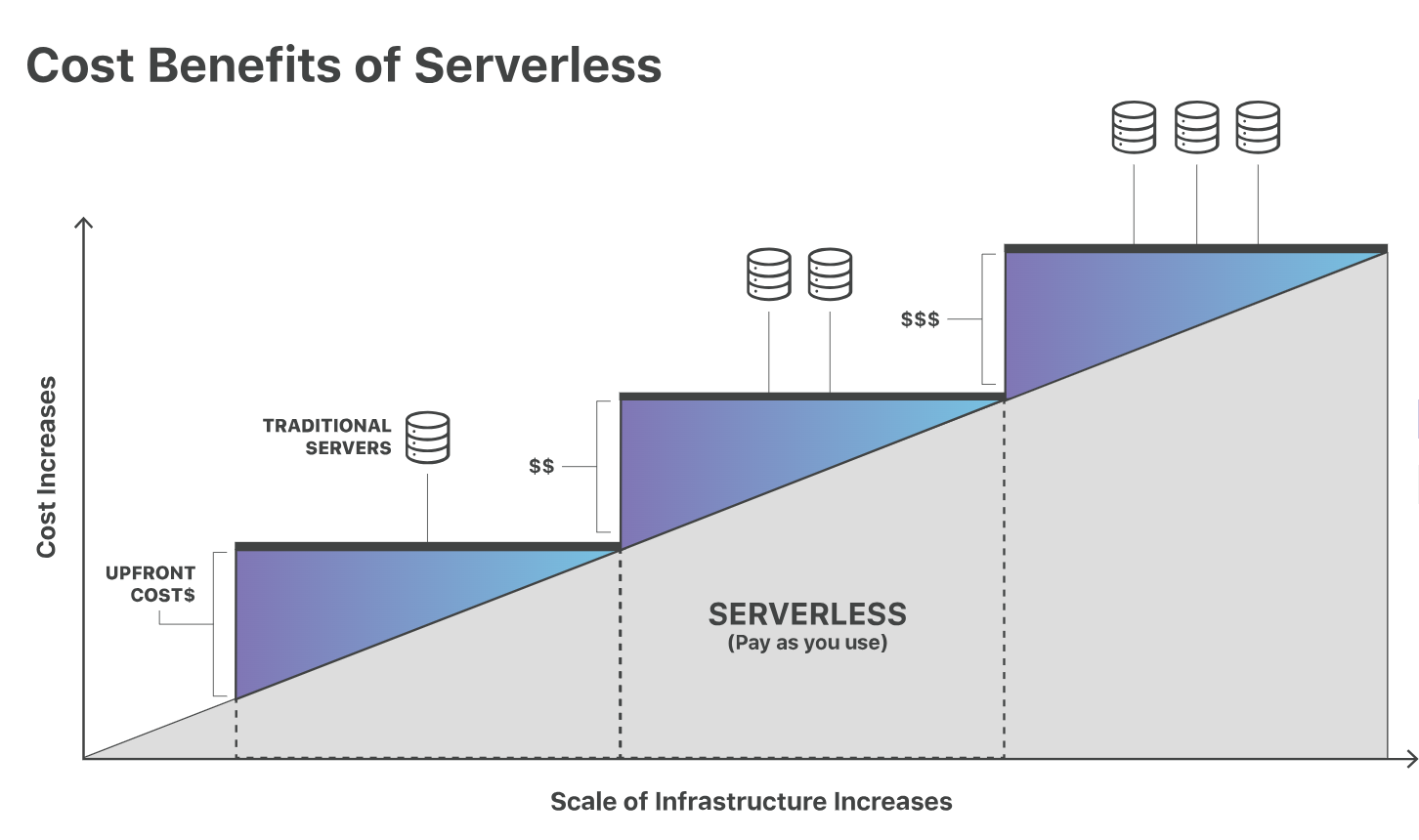
Created by - Skillzam Team
What is serverless computing?
What is serverless computing? Serverless computing is a method of providing backend services on an as-used basis. Servers are still used, but a company that gets backend services from a serverless vendor is charged based on usage, not a fixed amount of bandwidth or number of servers.What is serverless computing?Serverless computing is a method of providing backend services on an as-used basis. A serverless provider allows users to write and deploy code without the hassle of worrying about the underlying infrastructure. A company that gets backend services from a serverless vendor is charged based on their computation and do not have to reserve and pay for a fixed amount of bandwidth or number of servers, as the service is auto-scaling. Note that despite the name serverless, physical servers are still used but developers do not need to be aware of them.In the early days of the web, anyone who wanted to build a web application had to own the physical hardware required to run a server, which is a cumbersome and expensive undertaking.Then came cloud computing, where fixed numbers of servers or amounts of server space could be rented remotely. Developers and companies who rent these fixed units of server space generally over-purchase to ensure that a spike in traffic or activity will not exceed their monthly limits and break their applications. This means that much of the server space that gets paid for can go to waste. Cloud vendors have introduced auto-scaling models to address the issue, but even with auto-scaling an unwanted spike in activity, such as a DDoS Attack, could end up being very expensive.Serverless computing allows developers to purchase backend services on a flexible ‘pay-as-you-go’ basis, meaning that developers only have to pay for the services they use. This is like switching from a cell phone data plan with a monthly fixed limit, to one that only charges for each byte of data that actually gets used.The term ‘serverless’ is somewhat misleading, as there are still servers providing these backend services, but all of the server space and infrastructure concerns are handled by the vendor. Serverless means that the developers can do their work without having to worry about servers at all.What are backend services? What’s the difference between frontend and backend?Application development is generally split into two realms: the frontend and the backend. The frontend is the part of the application that users see and interact with, such as the visual layout. The backend is the part that the user doesn’t see; this includes the server where the application's files live and the database where user data and business logic is persisted.For example, let’s imagine a website that sells concert tickets. When a user types a website address into the browser window, the browser sends a request to the backend server, which responds with the website data. The user will then see the frontend of the website, which can include content such as text, images, and form fields for the user to fill out. The user can then interact with one of the form fields on the frontend to search for their favorite musical act. When the user clicks on ‘submit’, this will trigger another request to the backend. The backend code checks its database to see if a performer with this name exists, and if so, when they will be playing next, and how many tickets are available. The backend will then pass that data back to the frontend, and the frontend will display the results in a way that makes sense to the user. Similarly, when the user creates an account and enters financial information to buy the tickets, another back-and-forth communication between the frontend and backend will occur.What kind of backend services can serverless computing provide?Most serverless providers offer database and storage services to their customers, and many also have Function-as-a-Service (FaaS) platform. FaaS allows developers to execute small pieces of code on the network edge. With FaaS, developers can build a modular architecture, making a codebase that is more scalable without having to spend resources on maintaining the underlying backend What are the advantages of serverless computing?· Lower costs - Serverless computing is generally very cost-effective, as traditional cloud providers of backend services (server allocation) often result in the user paying for unused space or idle CPU time.· Simplified scalability - Developers using serverless architecture don’t have to worry about policies to scale up their code. The serverless vendor handles all of the scaling on demand.· Simplified backend code - With FaaS, developers can create simple functions that independently perform a single purpose, like making an API call.· Quicker turnaround - Serverless architecture can significantly cut time to market. Instead of needing a complicated deploy process to roll out bug fixes and new features, developers can add and modify code on a piecemeal basis. How does serverless compare to other cloud backend models?A couple of technologies that are often conflated with serverless computing are Backend-as-a-Service and Platform-as-a-Service. Although they share similarities, these models do not necessarily meet the requirements of serverless.Backend-as-a-service (BaaS) is a service model where a cloud provider offers backend services such as data storage, so that developers can focus on writing front-end code. But while serverless applications are event-driven and run on the edge, BaaS applications may not meet either of these requirements Platform-as-a-service (PaaS) is a model where developers essentially rent all the necessary tools to develop and deploy applications from a cloud provider, including things like operating systems and middleware. However PaaS applications are not as easily scalable as serverless applications. PaaS also don’t necessarily run on the edge and often have a noticeable startup delay that isn’t present in serverless applications. Infrastructure-as-a-service (IaaS) is a catchall term for cloud vendors hosting infrastructure on behalf of their customers. IaaS providers may offer serverless functionality, but the terms are not synonymous. What is next for serverless?Serverless computing continues to evolve as serverless providers come up with solutions to overcome some of its drawbacks. One of these drawbacks is cold starts.Typically when a particular serverless function has not been called in a while, the provider shuts down the function to save energy and avoid over-provisioning. The next time a user runs an application that calls that function, the serverless provider will have to spin it up fresh and start hosting that function again. This startup time adds significant latency, which is known as a ‘cold start’.Once the function is up and running it will be served much more rapidly on subsequent requests (warm starts), but if the function is not requested again for a while, the function will once again go dormant. This means the next user to request that function will experience a cold start. Up until fairly recently, cold starts were considered a necessary trade-off of using serverless functions. As more and more of the drawbacks of using serverless get addressed and the popularity of edge computing grows, we can expect to see serverless architecture becoming more widespread.
More detailsPublished - Tue, 23 Jul 2024
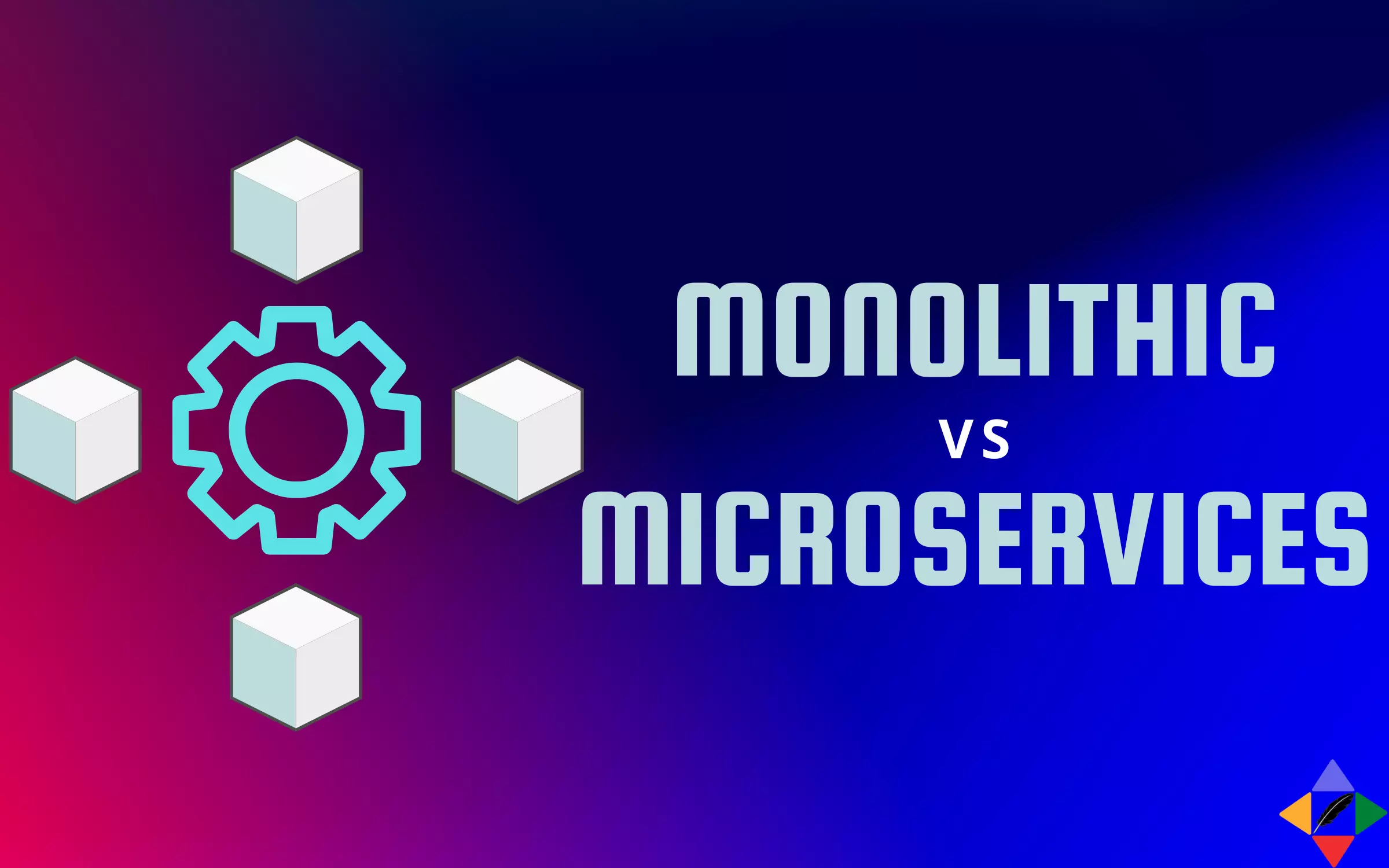
Created by - Skillzam Team
Monolithic vs. Micro-services: An Overview
In the world of software development, there are two main architectures that are commonly used to build applications: monolithic and micro-services. Both have their strengths and weaknesses, and choosing the right architecture for a particular project depends on a variety of factors, including the size and complexity of the application, the development team's expertise, and the organization's goals and priorities. In this article, we'll take a closer look at the differences between monolithic and micro-services architectures, their respective strengths and advantages, and how to choose between them for your next project.Monolithic Architecture Monolithic architecture is the traditional approach to building software applications, where all the components of the application are tightly coupled and deployed as a single unit. This means that the entire application, including the user interface, business logic, and data access layer, is packaged and deployed as a single executable or binary file. When changes are made to any part of the application, the entire application must be rebuilt, tested, and deployed.Advantages: Simplicity: Monolithic architecture is simple to develop and maintain as the entire application is housed in a single executable file. Performance: As all components of an application are present in a single file, there is no communication overhead between different components, which make the application fast and efficient. Simple deployment: Monolithic technology is not as complex as micro-service technology. Monolithic applications have fewer moving parts, so there are fewer components to manage and fix together. All in all, the self-contained nature of a monolithic app makes it easier to deploy, manage, and maintain than a micro-services solution. Security: Security is easier to implement in monolithic applications as the entire application is running on a single machine, making it easier to control access to different components. Disadvantages: Scalability: Because monolithic architecture software is tightly coupled, it can be hard to scale. As your codebase grows and/or you want to add new features, you need to drag the entire architecture up with you. Even if you only want to boost or alter a single function, the entire application needs changing. This isn’t just time and resource-consuming but can also disrupt your continuous delivery. Limited Flexibility: Monolithic architecture can be limiting in terms of the flexibility it offers, as all components are tightly integrated, making it difficult to make changes to one component without impacting the others. Large Codebase: As all components of an application are present in a single file, the codebase of a monolithic application can become large and difficult to manage. Single Point of Failure: As the entire application is running on a single machine, any failure in one component can bring down the entire application. Development and Deployment Time: Monolithic architecture can be slow to develop and deploy, especially when the application is large, as changes made to one component can require recompiling the entire application. Micro-services ArchitectureMicro-services architecture, on the other hand, is a newer approach to building software applications that involves breaking down the application into small, independent services that communicate with each other over a network. Each service is designed to perform a specific function and can be developed, tested, and deployed independently of the other services. Advantages: Scalability: Micro-services architecture allows for easy scaling of individual services, making it easy to handle high traffic and large-scale applications. Flexibility: Micro-services architecture allows for greater flexibility in development and deployment, as each service can be developed and deployed independently of the others. Resilience: In micro-services architecture, if one service fails, it does not bring down the entire application, as other services continue to run. Technology Diversity: Micro-services architecture allows for the use of different technologies and programming languages for each service, enabling developers to choose the best tool for each task. Disadvantages: Complexity: Micro-services architecture can be complex to design, develop, test, and maintain as it involves multiple independent services communicating with each other. Overhead: Micro-services architecture requires additional overhead in terms of communication between services and API management. · High infrastructure costs: Each new micro-service can have its own cost for test suite, deployment playbooks, hosting infrastructure, monitoring tools, and more. Distributed System: Micro-services architecture creates a distributed system, which can make it challenging to manage and monitor, especially when dealing with failures and debugging. Integration Testing: Integration testing can be challenging in micro-services architecture as it involves multiple services interacting with each other, making it difficult to isolate problems. Technologies involved in implementing Monolithic and Micro-services ArchitectureThe underlying technology stack for implementing monolithic and micro-services architecture can vary, depending on the specific needs and goals of the organization. However, there are some common technologies and tools that are typically used for each architecture.For monolithic architecture, the technology stack typically includes a single codebase or repository, a web application framework, and a relational database management system. The web application framework is used to handle HTTP requests and responses, and the relational database is used to store data. Examples of popular web application frameworks for monolithic architecture include Ruby on Rails, Django, and Laravel.For micro-services architecture, the technology stack typically includes multiple independent services that communicate with each other through APIs. Each service may have its own technology stack, depending on its specific requirements. However, some common technologies and tools used in micro-services architecture include containerization platforms such as Docker and Kubernetes, service discovery tools such as Consul or Etcd, and message brokers like RabbitMQ or Kafka. Additionally, micro-services architecture often relies on lightweight and fast web frameworks like Node.js, Flask, or Dropwizard, and NoSQL databases like MongoDB, Cassandra, or DynamoDB.Regardless of the specific technology stack used, implementing both monolithic and micro-services architecture requires a good understanding of software design principles, distributed systems, and scalable infrastructure. Differences Summary Here is a table outlining the main differences between monolithic and micro-services architecture: Monolithic Architecture Micro-services Architecture Deployment Deployed as a single unit Deployed as independent services Scalability Horizontal scaling is difficult due to tight coupling Horizontal scaling is easy as services are independent Complexity Low complexity High complexity Development Simple and easy to develop, test, and deploy More complex development and deployment processes due to independent services Maintenance Small changes can have cascading effects Services can be updated independently Expertise Required Lower expertise required in distributed systems Higher expertise required in distributed systems Flexibility Low flexibility High flexibility Communication Tight coupling of components Loose coupling through APIs Overall, monolithic architecture is simpler and easier to develop, but it becomes more difficult to scale and maintain as an application grows in size and complexity. Micro-services architecture offers greater scalability and flexibility, but it requires a higher degree of expertise in distributed systems and can be more complex to develop and deploy. Choosing Between Monolithic and Micro-services ArchitectureChoosing between monolithic and micro-services architecture depends on a variety of factors, including the size and complexity of the application, the development team's expertise, and the organization's goals and priorities.For small to medium-sized applications or development teams that are just starting out, monolithic architecture may be the best choice. Monolithic architecture is simple and easy to develop, test, and deploy, making it a good choice for applications that don't require a high degree of scalability or flexibility.However, as an application grows in size and complexity, or as the development team gains more expertise in building distributed systems, micro-services architecture may become a better choice. Micro-services architecture offers greater scalability and flexibility, allowing organizations to respond more quickly to changing demands and user needs. However, it also requires a higher degree of expertise and knowledge of distributed systems, making it a better choice for development teams that have experience with building and managing distributed systems. Ultimately, the choice between monolithic and micro-services architecture depends on the specific needs and goals of the organization. Both architectures have their strengths and weaknesses, and choosing the right one requires careful consideration of the tradeoffs between simplicity and complexity, scalability and flexibility, and ease of development and maintenance. The choice between the two architectures ultimately depends on the specific needs and goals of the organization.
More detailsPublished - Tue, 21 Mar 2023
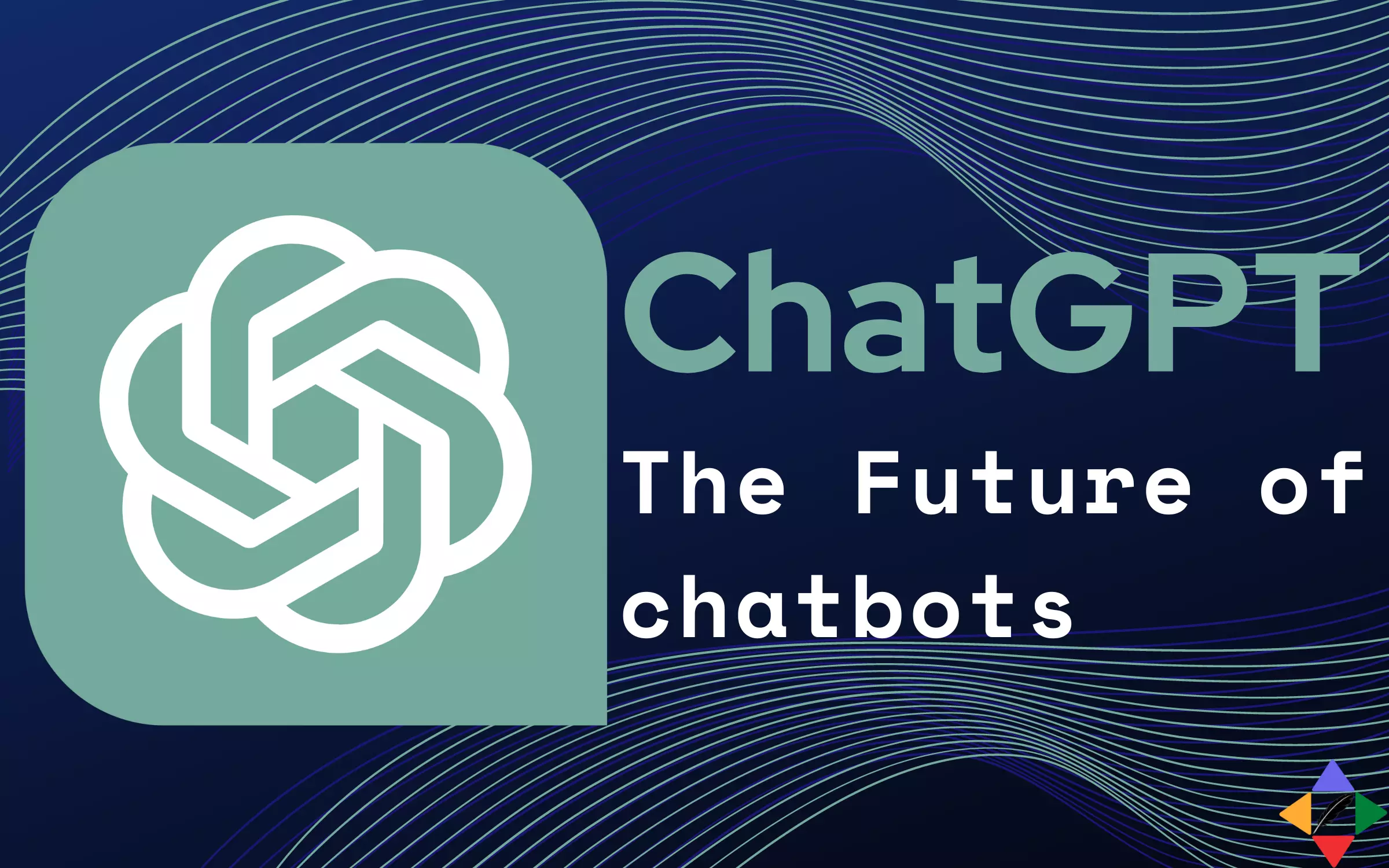
Created by - Skillzam Team
ChatGPT: The Future of Chatbots
Chatbots have been around for decades, but their capabilities have grown significantly in recent years. With advancements in artificial intelligence and natural language processing, chatbots are now able to understand and respond to human language in a more natural and nuanced way. One of the most advanced chatbots in existence today is ChatGPT, a large language model developed by OpenAI.What is ChatGPT?ChatGPT is an AI-powered chatbot that is designed to engage in natural language conversations with humans. It is based on the GPT-3.5 architecture, which is a variant of the GPT-3 language model developed by OpenAI. GPT-3 is currently one of the most advanced natural language processing models in existence, and ChatGPT builds on this technology to create a chatbot that is capable of understanding and responding to a wide range of human queries.One of the key features of ChatGPT is its ability to generate human-like responses. Unlike traditional chatbots, which rely on pre-programmed responses to specific queries, ChatGPT uses machine learning algorithms to generate responses on the fly. This means that the chatbot is able to adapt its responses to match the tone and style of the user, creating a more natural and engaging conversation.How does ChatGPT work?ChatGPT is based on a deep learning neural network that is trained on a massive corpus of text data. This includes everything from books and articles to social media posts and online forums. By analyzing this data, the model is able to learn how humans use language and develop an understanding of common patterns and structures.When a user interacts with ChatGPT, the chatbot analyzes the text input and uses its neural network to generate a response. This response is based on the user's input, as well as any context or information that the chatbot has gathered from previous interactions. The model is able to generate responses that are grammatically correct and semantically relevant, while also taking into account the user's intent and any relevant information that they have provided.One of the key advantages of ChatGPT is its ability to generate responses that are more personalized and contextually relevant than traditional chatbots. By analyzing previous interactions and understanding the user's intent, the chatbot is able to provide more accurate and useful responses. This makes it a valuable tool for businesses and organizations that want to provide a more engaging and personalized customer experience.Applications of ChatGPTChatGPT has a wide range of potential applications, from customer service and support to language learning and education. Some of the key areas where ChatGPT can be used include: Customer service and support: ChatGPT can be used to provide personalized customer support and answer common queries in real-time. This can help businesses to reduce the workload on their support teams and improve the overall customer experience. Language learning: ChatGPT can be used to help people learn new languages by engaging in conversational practice. This can be particularly useful for people who are learning a new language but don't have access to a native speaker. Mental health support: ChatGPT can be used to provide mental health support and counseling to people who may be struggling with anxiety, depression, or other mental health issues. The chatbot can provide a non-judgmental listening ear and offer practical advice and resources. Personalized shopping assistance: ChatGPT can be used to provide personalized shopping assistance to customers, helping them to find products that meet their needs and preferences. Education: ChatGPT can be used to provide personalized learning experiences to students, offering tailored feedback and guidance based on their individual strengths and weaknesses. Challenges and Limitations of ChatGPTDespite its many advantages, ChatGPT still faces several challenges and limitations that must be addressed in order for it to reach its full potential. Bias: Like any machine learning model, ChatGPT is only as unbiased as the data it is trained on. If the data contains biases or stereotypes, the model is likely to replicate them in its responses. This can be a particular concern in areas like mental health support, where bias and stereotype can be harmful. Addressing this challenge will require ongoing efforts to improve the diversity and quality of the data used to train the model. Limited domain knowledge: While ChatGPT is capable of generating responses on a wide range of topics, its domain knowledge is limited to what it has learned from the data it has been trained on. This means that the chatbot may struggle to respond to queries outside of its domain, or provide inaccurate or incomplete information. Addressing this challenge will require ongoing efforts to improve the depth and breadth of the data used to train the model. Safety and security: ChatGPT is designed to engage in natural language conversations with humans, which means that it may be vulnerable to attacks or abuse. For example, it may be used to spread misinformation or engage in phishing scams. Addressing this challenge will require ongoing efforts to improve the safety and security of the chatbot, including measures like content moderation and user verification. Limited emotional intelligence: While ChatGPT is capable of generating responses that are grammatically correct and semantically relevant, it is still limited in its emotional intelligence. This means that it may struggle to understand and respond to emotional cues in the same way that a human would. Addressing this challenge will require ongoing efforts to improve the emotional intelligence of the chatbot, such as incorporating sentiment analysis and other emotional recognition techniques. Limited memory: ChatGPT is designed to analyze each query in isolation, which means that it may struggle to maintain a coherent conversation over time. This can be particularly challenging for longer or more complex conversations, where context and history are important. Addressing this challenge will require ongoing efforts to improve the memory and long-term learning capabilities of the chatbot.Energy consumption of ChatGPT queryThe energy consumption of each query on ChatGPT can vary widely depending on several factors such as the complexity of the query, the size of the model, and the computational resources available to process the query. However, it is generally known that large language models like GPT-3, which is the architecture that ChatGPT is based on, are known to be energy-intensive and require significant computational resources to operate.According to a study conducted by researchers at the University of Massachusetts Amherst, the energy consumption of a single inference pass on a GPT-3 model with 175 billion parameters can range from 3.2 kWh to 13 kWh depending on the hardware used to perform the inference. This energy consumption is significant when compared to other common everyday devices like smartphones or laptops, which typically consume less than 1 kWh per day.It's worth noting that ChatGPT is a cloud-based service that is hosted by OpenAI, which means that the energy consumption of each query will also depend on the energy efficiency of the data centers used to host the service. OpenAI has publicly committed to using renewable energy sources to power its data centers and has also implemented energy-efficient hardware and cooling systems to minimize the environmental impact of its operations. Overall, while the energy consumption of each query on ChatGPT may not be easily quantifiable, it is clear that large language models like GPT-3 are energy-intensive and require significant computational resources to operate. As such, it is important to consider the environmental impact of these models and work towards developing more energy-efficient and sustainable technologies for the future. Conclusion ChatGPT is a powerful and versatile chatbot that has the potential to revolutionize the way we interact with machines. Its ability to generate human-like responses and adapt to user intent and context make it a valuable tool for businesses and organizations across a wide range of industries. However, as with any emerging technology, ChatGPT also faces several challenges and limitations that must be addressed in order for it to reach its full potential. By working to improve the quality and diversity of the data used to train the model, as well as its emotional intelligence and memory capabilities, we can ensure that ChatGPT continues to push the boundaries of what is possible in the world of chatbots.
More detailsPublished - Tue, 21 Mar 2023
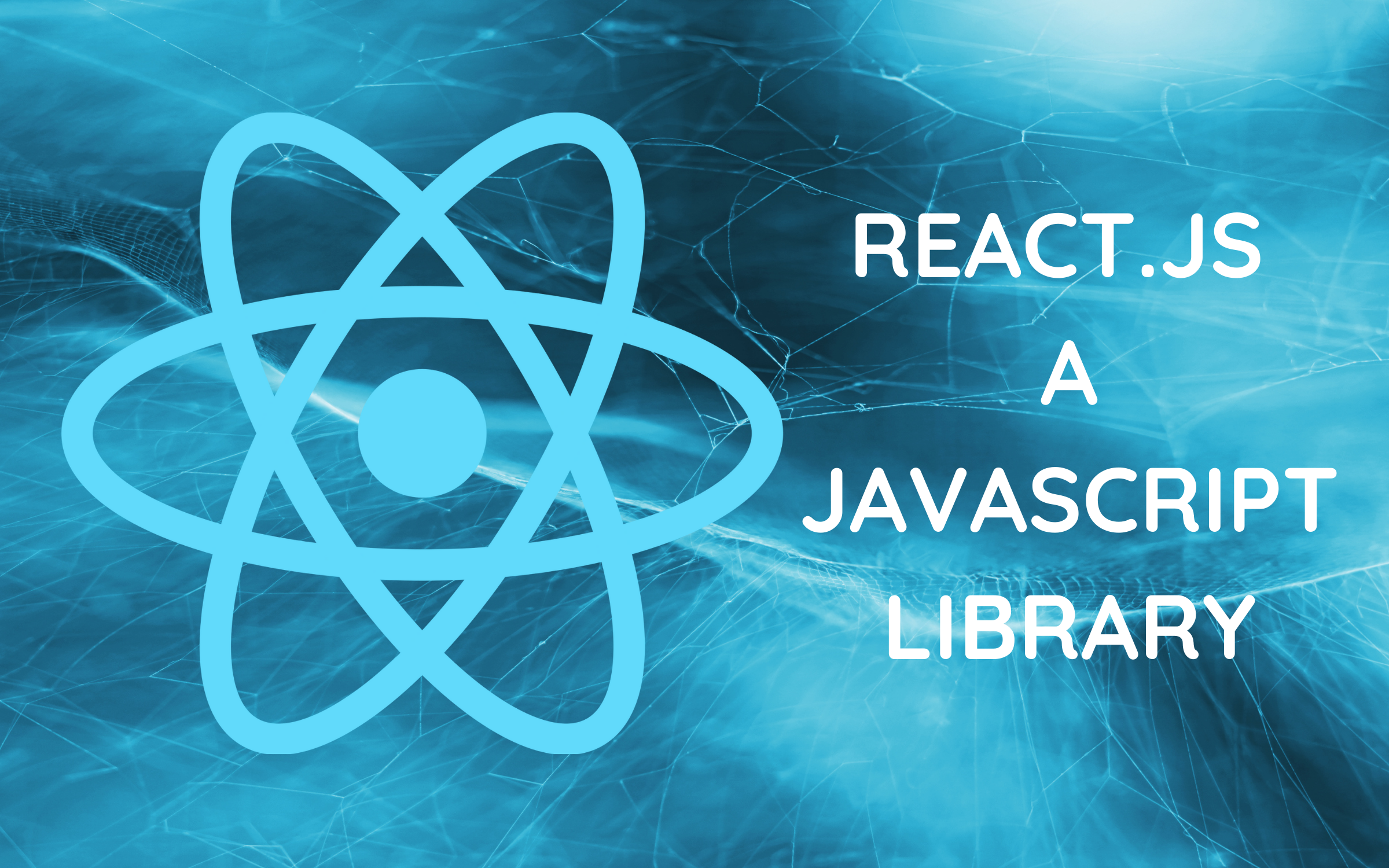
Created by - Skillzam Team
React - A JavaScript Library : Highly in-demand skill
From conception of an idea or business case to testing, a top-notch React developer can help you build interactive components for your website or web applications using the React development concepts.What is React.js? What does a React developer do? These are a few of the most common questions we see on the web. We’ll answer these questions and more in this blog.Let’s first explore the interesting world of React. Alternately spelled as React.js or ReactJS; React is a declarative, efficient, and flexible JavaScript library for building user interfaces. It lets you compose complex User Interfaces (UIs) from small and isolated pieces of code called “components”. Simply put, UI is a term that describes any element that allows users to interact and communicate with the information saved in a device (laptop, tablet, smartphone, etc.). The user interface is the primary point of contact between humans and modern computers. Keyboards, mouse, computer texts, and desktop layout are some of the best examples of UI.React was created by Jordan Walke, a software engineer at Facebook, who released an early prototype of React called "FaxJS". He was influenced by XHP, an HTML component library for PHP. It was first deployed on Facebook's News Feed in 2011 and later on Instagram in 2012. It was open-sourced at JSConf US in May 2013.Before ReactJS was introduced, developers back then were stuck building UIs using raw JavaScript or with jQuery (a React predecessor that focused less on UI). This meant that the development process took longer with more room for errors and bugs. To solve this problem, Facebook engineer Jordan Wilke created FaxJS (first React prototype) in 2011.React makes it simple and easy to build websites and apps, create UI test cases, reuse existing codes on the website to its mobile counterpart, and improve the UI and performance of web applications. It’s versatile enough to use where JavaScript is required.Today, more and more enterprises benefit from ReactJS, a testament to its burgeoning popularity in software development. Some of the high-traffic websites that use React are Facebook, Netflix, Airbnb, Instagram, Uber, Reddit, Salesforce and so on.Along with the upswing in React usage, is the surge in demand for a React.js developer. A highly skilled React developer is involved in the entire stages of the development and maintenance of user interface components. What does a React Developer do?In a nutshell, a React developer designs and implements user-facing features for websites and applications using React.js.They are known as front-end developers, a sub-group of developers that manage everything that users see on their web browsers or applications. In other words, they are responsible for the look and feel of a website or application to ensure a seamless experience for users.The menu buttons, online forms, the graphic icons and images, voice recognition (Siri and Cortana), and gesture-driven interface (example: pinching the smartphone screen to zoom in and out) are just a few of the exciting things that a React developer can do.React developers use their knowledge in JavaScript, CSS, HTML, and other programming languages and incorporate them into the ReactJS open-source library ecosystem.Generally, they work with software testing specialists to test the codes before the web application or website goes live. React developers may also work with a team of developers, programmers, web designers, and project managers to work closely on a client’s software project. React Developer SkillsIndeed, React is a powerful tool for front-end development. Many organizations agree that having a solid background in React is essential to dominating this technology-driven industry.To level up in this competitive field, a React.js candidate should have the essential skills in these React developer tools: Web technologies – An in-depth knowledge and experience working with web technologies such as JavaScript, HTML, CSS, TypeScript, C#, SASS, Stylus, Stylus, Python, and LESS. React tools – Strong proficiency in Enzyme, Webpack, Redux, and Flux. Web frameworks – Proven expertise in different frameworks like React Native, AngularJS, Angular2, VueJS, SocketIO, Backbone, KnockoutJS, Svelte, and Bootstrap. Open-source Libraries – Demonstrable experience with JQuery, MomentJS, html5sql.js, RequireJS, and Loads. Software testing tools – A good working knowledge in testing codes using Mocha, Jest, Unit-tests, TDD, Karma, VCS, and Selenium (base). Databases – A familiarity working with different databases such as MySQL, NoSQL(e.g., MongoDB), PostgreSQL, Redis is recommended. Code repositories – Working experience using GitHub, Bitbucket, RhodeCode, and devZing Subversion Cloud management – A strong background in different cloud platforms like Amazon AWS, Microsoft Azure, OpenStack Apache, and Google Cloud Platform Project management – It’s a great advantage if they know how to manage projects using JIRA, Basecamp, Trello, Asana, ClickUp, or Zoho Projects. React Developer SalaryNow for the fun part. Let’s get an estimate on the cost of hiring a React developer. Overall, React developers are one of the highest-paid among JavaScript developers. Their salary depends on: years of experience different roles held over time level of expertise special skills training and certifications geographic location The average ReactJS developer salary in the USA is $119,997 per year or $61.54 per hour. Entry level positions start at $99,890 per year while most experienced workers make up to $150,000 per year.
More detailsPublished - Fri, 13 May 2022



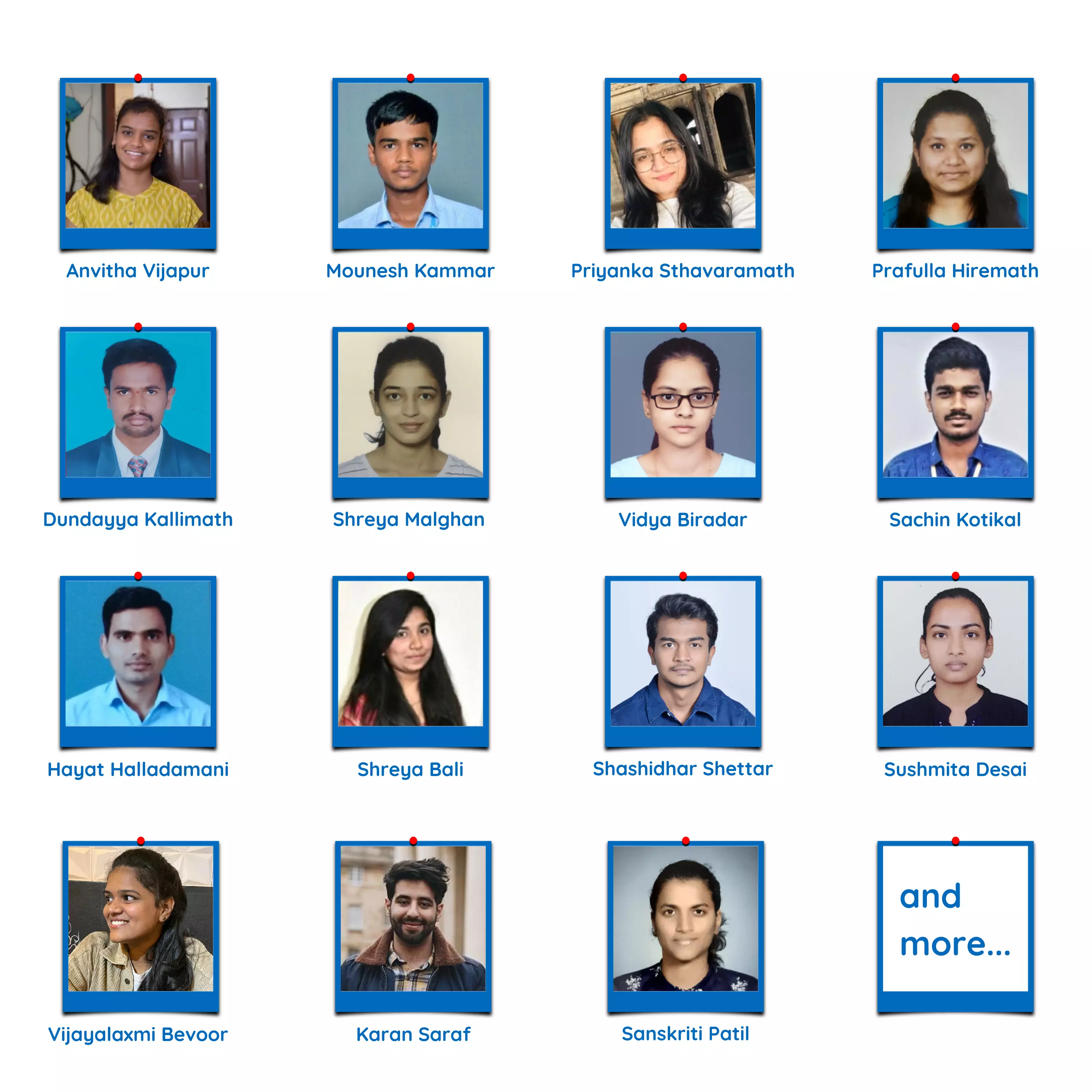
Write a public review